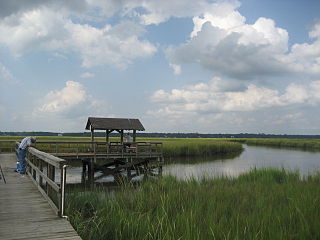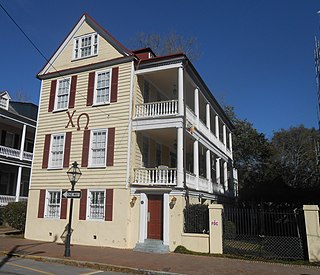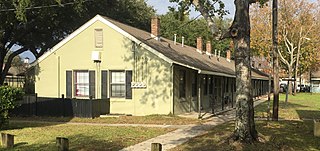
Porgy is a novel written by the American author DuBose Heyward and published by the George H. Doran Company in 1925.

Porgy and Bess is an English-language opera by American composer George Gershwin, with a libretto written by author DuBose Heyward and lyricist Ira Gershwin. It was adapted from Dorothy Heyward and DuBose Heyward's play Porgy, itself an adaptation of DuBose Heyward's 1925 novel of the same name.

Thomas Heyward Jr. was a Founding Father of the United States who signed the United States Declaration of Independence and the Articles of Confederation as a delegate of the Continental Congress from South Carolina. His loss of a considerable number of slaves led to him being widely proclaimed as a martyr of the revolution.

Edwin DuBose Heyward was an American author best known for his 1925 novel Porgy. He and his wife Dorothy, a playwright, adapted it as a 1927 play of the same name. The couple worked with composer George Gershwin to adapt the work as the 1935 opera Porgy and Bess. It was later adapted as a 1959 film of the same name.

Dorothy Heyward was an American playwright.

James Island is a town in Charleston County, South Carolina, United States. It is located in the central and southern parts of James Island. James Island is included within the Charleston-North Charleston-Summerville metropolitan area and the Charleston-North Charleston Urbanized Area.
Rainbow Row is the name for a series of thirteen colorful historic houses in Charleston, South Carolina. The houses are located north of Tradd St. and south of Elliott St. on East Bay Street, that is, 79 to 107 East Bay Street. The name Rainbow Row was coined after the pastel colors they were painted as they were restored in the 1930s and 1940s. It is a popular tourist attraction and is one of the most photographed parts of Charleston.

The Dock Street Theatre is a theater in the historic French Quarter neighborhood of downtown Charleston, South Carolina.

St. Mary of the Annunciation Catholic Church is a Catholic church in Charleston, South Carolina, and was the first Catholic parish established in the Carolinas and Georgia. The current building at 93 Hasell Street and is the third structure to house the congregation on this site.
As it has with every aspect of Charleston, South Carolina culture, the Gullah community has had a tremendous influence on Music in Charleston, especially when it comes to the early development of jazz music. In turn, the music of Charleston has had an influence on that of the rest of the country. The geechee dances that accompanied the music of the dock workers in Charleston followed a rhythm that inspired Eubie Blake's "Charleston Rag" and soon later James P. Johnson's "The Charleston", as well as the dance craze that defined a nation in the 1920s. "Ballin' the Jack", which was the popular dance in the years before "The Charleston", was written by native Charlestonian Chris Smith.

Porgy: A Play in Four Acts is a play by Dorothy Heyward and DuBose Heyward, adapted from the short novel by DuBose Heyward. It was first produced by the Theatre Guild and presented October 10, 1927 – August 1928 at the Guild Theatre in New York City. Featuring a cast of African Americans at the insistence of its authors—a decision unusual for its time—the original production starred Frank Wilson, Evelyn Ellis, Jack Carter, and Rose McClendon. Porgy marked the Broadway directing debut of Rouben Mamoulian. The play ran a total of 55 weeks in New York, and the original cast toured the United States twice and performed for 11 consecutive weeks in London.

Vanderhorst Row in Charleston, South Carolina is a three-unit residential building built in 1800 by Arnoldus Vanderhorst, a governor of South Carolina (1792-1794). Each unit is four floors. The units at the north and south end of the range have doors along East Bay Street on the front in addition to doors on the sides of the unified building and exits to the rear. After the Civil War, the use of the building changed, and commercial purposes were installed. The building fell into disrepair before it was bought in 1935 by Josiah E. Smith for a restoration which cost $30,000. The architect for the restoration of the building was Stephen Thomas. The three units rented for $1500 to $1800 a year after the work was completed. As restored, each unit had a living room, dining room, kitchen, breakfast room, and pantry on the first floor; a drawing room, bedroom, and bath on the second; two more bedrooms on the third; and servants' rooms in the attic. For many years after the restoration of the building, the central unit was rented by the Charleston Club for its headquarters; the club relocated to 53 East Bay Street in 1958.

The Elias Vanderhorst House at 28 Chapel Street, Charleston, South Carolina, is a four-story mansion house which was built around 1835 as a home for members of the prominent Vanderhorst family of plantation owners.

The Rebecca Screven House in Charleston, South Carolina is Charleston single house built sometime before 1828 at 35 Legare Street.

The John Ashe House is an 18th-century house at 32 South Battery, Charleston, South Carolina. The house's date of construction is unknown, but it was built sometime around 1782 and renovated in the 1930s. In August 2015, it replaced the James Simmons House as the most expensive house sold in Charleston when it fetched about $7.72 million.

The Charleston Renaissance is a period between World Wars I and II in which the city of Charleston, South Carolina, experienced a boom in the arts as artists, writers, architects, and historical preservationists came together to improve and represent their city. The Charleston Renaissance was related to the larger interwar artistic movement known as the Southern Renaissance and is credited with helping to spur the city's tourist industry.

The John Fullerton House is a historic building on Legare Street in Charleston, South Carolina. The house was designed and built by Scottish master builder John Fullerton some time after he bought the land on December 31, 1772, and before he resold it at a much higher cost in 1777. Among the notable features of the house are the highly decorative window casings on the first and second floor; the console brackets and hoods reflect a high style that can be found on other notable houses of the same period in Charleston. The house is built of cypress.

The John Scott House at 38 Coming Street is one of the two oldest buildings on the Charleston, South Carolina campus of the College of Charleston.

The James Vanderhorst House is a pre-revolutionary house in Charleston, South Carolina. It is notable for its connection to American artist Alfred Hutty.

The Wragg Borough Homes is a public housing project in Charleston, South Carolina. It is bounded by Drake Street, Chapel Street, America and Elizabeth Streets, and South Street.

















